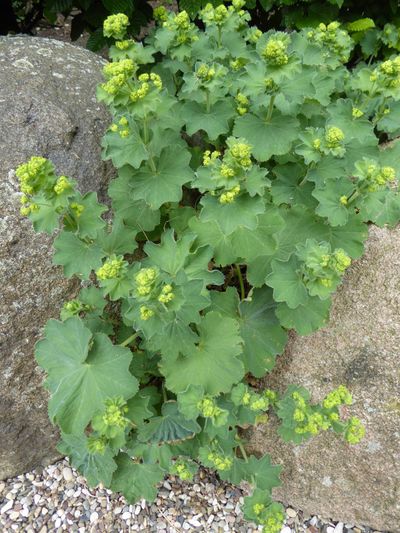Information About Lady’s Mantle Plant
Lady’s mantle (Alchemilla mollis or Alchemilla vulgaris) is an attractive perennial plant. Its soft gray-green foliage is semi-round with scalloped-shaped leaves. In late spring and early summer, the plant produces nearly inconspicuous chartreuse (yellow-green) blooms. This Turkey and Carpathian Mountain native is a low-growing ground cover, about 6 to 12 inches (15-30 cm.) tall, and in addition to its attractive looks, has an interesting background. The plant’s common name is said to have likely come from an ancient legend of it being used to adorn the Virgin Mary, as her cloak was thought to resemble its scalloped leaves. Once a popular medicinal herb, the root and leaves of lady’s mantle plant were both harvested in midsummer and used as poultices for bruises and wound healing. Its tea was used for easing menstrual pain in women as well.
How to Grow Lady’s Mantle
Lady’s mantle is easy to grow. Typically, the plant grows well in regions with cool summers and moist, fertile soil and is hardy in USDA plant hardiness zones 3-7. While it can tolerate full sun, lady’s mantle performs better in shade when grown in warmer regions. You should allow plenty of growing room for these plants, and space them about 8 to 12 inches (20-30 cm.) apart. Individual plants should be planted at the same depth as their current container, and it is helpful to add a little fertilizer or compost to the bottom of planting hole, watering generously afterward. Additionally, lady’s mantle can be sown outdoors after all danger of frost has passed. They may require cold stratification in order to germinate more easily. The seeds should be just barely covered with soil and well watered. If desired, you can also start them indoors four to six weeks prior to planting out. It takes about three to four weeks for them to germinate.
Caring for Lady’s Mantle
There’s not much involved with caring for lady’s mantle. It’s a very carefree plant and doesn’t require any special attention or fertilizing. Regular watering is only required when the plant is located in full sun or during times of extreme heat. Even then it should be just enough to moisten the soil. It does not like to be waterlogged. Warm regions that experience high humidity may have issues with fungal problems, particularly if the crown is kept damp. Providing adequate air circulation and allowing the soil to slightly dry out some should help remedy this. Since lady’s mantle is prone to reseeding and can become mildly aggressive in some areas, deadheading the flowers as they start to dry is helpful in preventing it from spreading into unwanted parts of the garden. Though its foliage remains semi-evergreen throughout winter, you should remove older leaves as they brown. In addition to seed propagation, the plant can be divided in spring or fall as needed. Learning how to grow lady’s mantle plant in the garden is easy, and with its minimal care and interesting features, this plant is especially appealing to have around.
